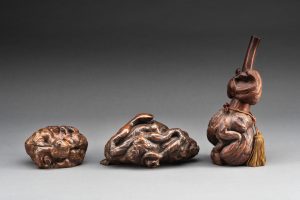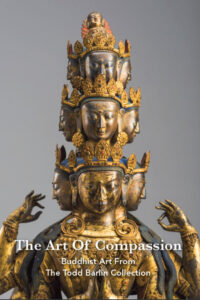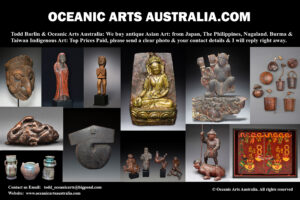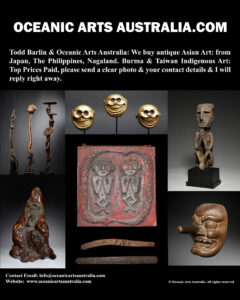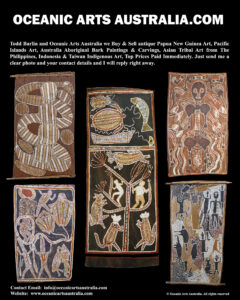Antique Japanese Natural Form Wood Okinomo (an object of beauty to display) Japan
| Collection No. | TB-11 |
|---|---|
| Size | Left to Right: 13x11cm & 21x13cm & 28cm |
Antique Japanese Natural Form Wood Okinomo is an object of beauty to display often used for Tea Ceremonies
The Japanese aesthetic of using natural forms in wood with minimal additions by the artist are some of the most beautiful objects in my collection. The one on the far left is a lidded box for tobacco that is signed & dated.
The middle object is a root-wood Okinomo from the late 19th Century the artist has added only a tiny bit of carving to make the snake head. The snake revered in Japanese culture was associated with medicinal rites and remedies. As a symbol of good luck, it was also thought to bring good health and embodies regeneration, healing, and medicine.
The far-right Burl-wood Okinimo is in the form of a gourd, in Japan, the gourd is often associated with divinity and is often found in many regional folk tales stemming from Taoist beliefs. Its curvaceous shape is commonly met with affection as a symbol of good luck, good health, and prosperity.
These three objects placed together in any order bring a sense of wonder & joy.
In Zen philosophy there are seven aesthetic principles for achieving Wabi-Sabi as listed below;
Fukinsei (不均斉): asymmetry, irregularity;
Kanso (簡素): simplicity;
Koko (考古): basic, weathered;
Shizen (自然): without pretense, natural;
Yugen (幽玄): subtly profound grace, not obvious;
Datsuzoku (脱俗): unbounded by convention, free;
Provenance: The Todd Barlin Collection of New Guinea Oceanic Art & Asian Art

